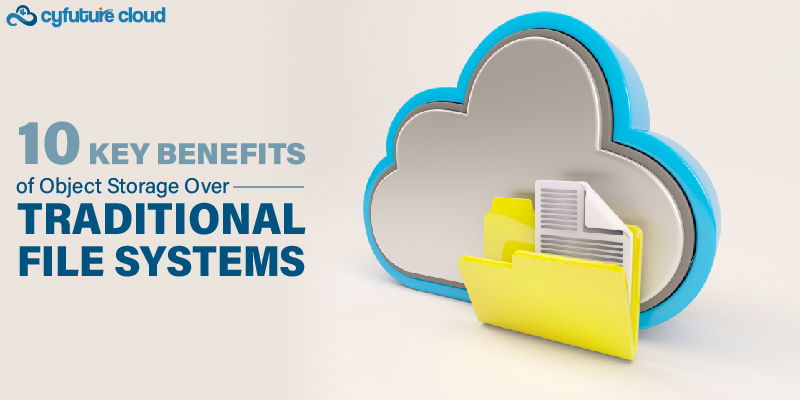Table of Contents
- What is business continuity planning (BCP) in cybersecurity?
- Why Cybersecurity Matters
- The Best Cybersecurity Practices for Business Continuity Planning
- 1. Regularly conduct risk assessments
- 2. Construct a business impact analysis (BIA).
- 3. Create a thorough incident response strategy
- 4. Take into account third-party and supply-chain risk management
- 5. Give employees cybersecurity training
- 6. Reduce downtime by using a crisis communication and incident response strategy.
- 7. Maintain total awareness and persistent monitoring
- 8. Maintain Current Software and Systems
- A Cyber Business Continuity Plan’s Essential Elements
- Conclusion
In the digital age, businesses are more vulnerable to cyberattacks that might result in data breaches, financial losses, and reputational damage. In light of these concerns, businesses must emphasize cybersecurity as a crucial element of their business continuity plan.
We will examine the critical function of cybersecurity in guaranteeing company continuity in this post and offer best practices for efficient cybersecurity.
What is business continuity planning (BCP) in cybersecurity?
An organization’s business continuity plan (BCP) must include cybersecurity as a key component, and policies and procedures about key technology and the security of confidential information must be considered. Business continuity planning should include standards for recognizing, controlling, and decreasing cyber threats. This enables departmental coordination and ensures businesses have a quick response strategy for any assaults.
The objectives of the cybersecurity team and those of the business continuity and disaster recovery teams are quite similar in many aspects. These teams should collaborate to develop an effective business continuity strategy that considers all facets of the firm. Teams can ensure effective security for crucial areas of emphasis, such as overall data and asset management, recovery and response, and the people engaged at every stage of the process using an integrated strategy.
Why Cybersecurity Matters
Businesses have always used computers to carry out routine operations, but during the past ten years, the number of workflows and services that have been digitized has grown significantly. The attack surface expands as more data is stored and utilized in routine corporate operations, placing more data in danger.
Numerous potential security dangers, not even a few years ago, have also emerged due to the widespread use of cloud services, cell phones, and the Internet of Things (IoT). Additionally, these security risks’ variety, organization, and targeting are increasing.
Cyberattacks have alarmingly increased by 93% only in the first half of 2021. Cyberattacks were the top three causes of downtime, accounting for over a third of instances where organizations failed to meet their high availability targets.
In 2022, a data breach would have cost an average of $9.44 million. Since the epidemic, data breaches have increased often as thieves have begun to take advantage of the shift to remote labour. Malware assaults also surged more than three times during this period compared to last year.
The Best Cybersecurity Practices for Business Continuity Planning
Your company’s business continuity strategy should initially incorporate cybersecurity risk management. Today’s expanding networks can only be kept secure by proactive cybersecurity, which may be improved through cooperation between business continuity planners and IT security teams. Discover 5 suggestions for facilitating BCP and cybersecurity integration:
1. Regularly conduct risk assessments
Businesses may detect possible IT system vulnerabilities and create plans to reduce risks by conducting regular risk assessments. Possible threats should be identified, their chance of materializing should be evaluated, and their possible effect and repercussions should be identified.
2. Construct a business impact analysis (BIA).
The many components of an organization’s cybersecurity risk management approach must be considered throughout the business impact analysis (BIA) process. Teams should include reputational risk, revenue loss, customer service and experience issues, legal and regulatory requirements, and increases in operational expenses due to an attack in their impact categories when considering cyber threats and risks.
Understanding the possible long-term or lingering repercussions, the organization could encounter over time. Organizations may make better judgements about how to ensure business continuity in the event of a data breach or attack by defining the entire spectrum of harm.
3. Create a thorough incident response strategy
To make sure that the organization is equipped to handle a cyber assault, a thorough incident response plan should be created and frequently evaluated. Procedures for locating and stopping the attack, alerting interested parties, and regaining access to systems and data should all be part of the strategy.
4. Take into account third-party and supply-chain risk management
Organizations frequently ignore supply chain and third-party risk management until it poses a direct danger to their assets or reputation. This reactive strategy is no longer adequate. Supply chain risk management is more crucial than ever when businesses collaborate with other businesses to conduct commercial operations. Teams must consider how various cybersecurity risks will affect the whole supply chain so that extra resources and contingency plans may be implemented to adequately address those threats.
5. Give employees cybersecurity training
Because employees are frequently the weakest link in cybersecurity, it is essential to teach them so they are aware of dangers and know how to handle them. Topics like phishing awareness, password hygiene, and incident reporting processes ought to be included in this training.
6. Reduce downtime by using a crisis communication and incident response strategy.
Cyberattacks may result in a number of irreversible losses to a company’s legal, financial, and reputational health, as was before mentioned. For your company to be able to restart operations quickly, an incident response plan must be in place. By explicitly defining what must be done and who must do it, this strategy should enable an effective response to security issues. To prevent duplicates and make sure that all bases are adequately covered, it’s crucial to consider all aspects of the organization’s business continuity strategy while designing this procedure.
7. Maintain total awareness and persistent monitoring
Enabling total visibility and ongoing monitoring is the most efficient method to proactively manage risk and reduce business continuity problems related to cybersecurity. This makes it possible for IT security teams to fully view the company’s cyber hygiene, allowing for more confident, well-informed decision-making and ongoing compliance monitoring, which is crucial in many industries.
Solutions that offer thorough visibility throughout an organization’s complete network infrastructure, including vendors and the full supply chain, should be used by businesses. Organizations can no longer accurately depict their degree of security using point-in-time assessments as the threat landscape is expanding at a rapid rate.
8. Maintain Current Software and Systems
Businesses may be more susceptible to cyberattacks if their software and systems are outdated. Regular upgrades should be done to guarantee that software and systems are secured against known vulnerabilities.
A Cyber Business Continuity Plan’s Essential Elements
Recognize that cybersecurity, other company activities, and business continuity planning cannot exist as separate business processes. Your company continuity plans need to make cybersecurity a key component.
A cyberattack might cause system outages that force you to use your business continuity plan, or any disruption to your operations could render your systems particularly sensitive to cyber hazards. An efficient continuity plan acknowledges this connection.
Consider the following before creating and finalizing your business continuity plan:
- On your business continuity team, invite members of your information security team.
- Perform a cybersecurity risk analysis on your systems.
- Examine every step of your supply chain to find any hazards brought on by dealing with other parties.
- To classify and rank prospective threats and losses, do a business impact analysis (BIA).
- To identify dependencies and weaknesses, test your systems.
- Establish a method for ongoing monitoring and uphold visibility to check system compliance and general cyber hygiene.
The following should be in a business continuity strategy that takes cybersecurity risk management into account:
- Roles and duties for crisis management have been clearly defined across the organization to reduce uncertainty and downtime.
- A thorough crisis communication strategy and IT security procedures list all preventative and corrective steps.
- In an incident response situation, actions are needed to protect your data and prevent a data breach.
- In addition to the primary website, intranets, social media accounts, shared files, and all IT assets, account for all apps that rely on IT.
- Secured access procedures, security workarounds, and tried-and-true backup solutions are described to maintain access throughout the disruption.
Conclusion
Planning for business continuity must include effective cybersecurity measures. Due to the rising sophistication and frequency of cyberattacks, businesses must prioritize cybersecurity to preserve sensitive data, uphold consumer confidence, and adhere to legal regulations.
Businesses should ensure they are ready to deal with the rising danger of cyberattacks by implementing best practices, such as frequent risk assessments, thorough incident response plans, staff cybersecurity training, and software upgrades.
Recent Post
Send this to a friend

 Server
Colocation
Server
Colocation CDN
Network
CDN
Network Linux
Cloud Hosting
Linux
Cloud Hosting Kubernetes
Kubernetes Pricing
Calculator
Pricing
Calculator
 Power
Power
 Utilities
Utilities VMware
Private Cloud
VMware
Private Cloud VMware
on AWS
VMware
on AWS VMware
on Azure
VMware
on Azure Service
Level Agreement
Service
Level Agreement 



















